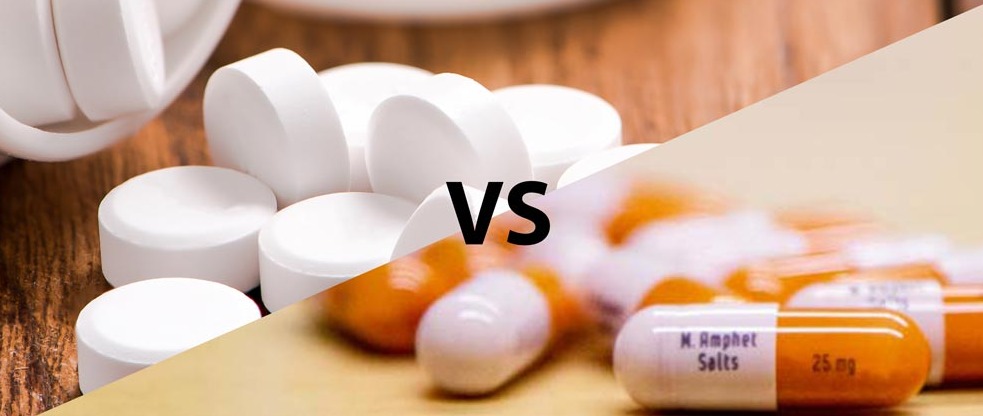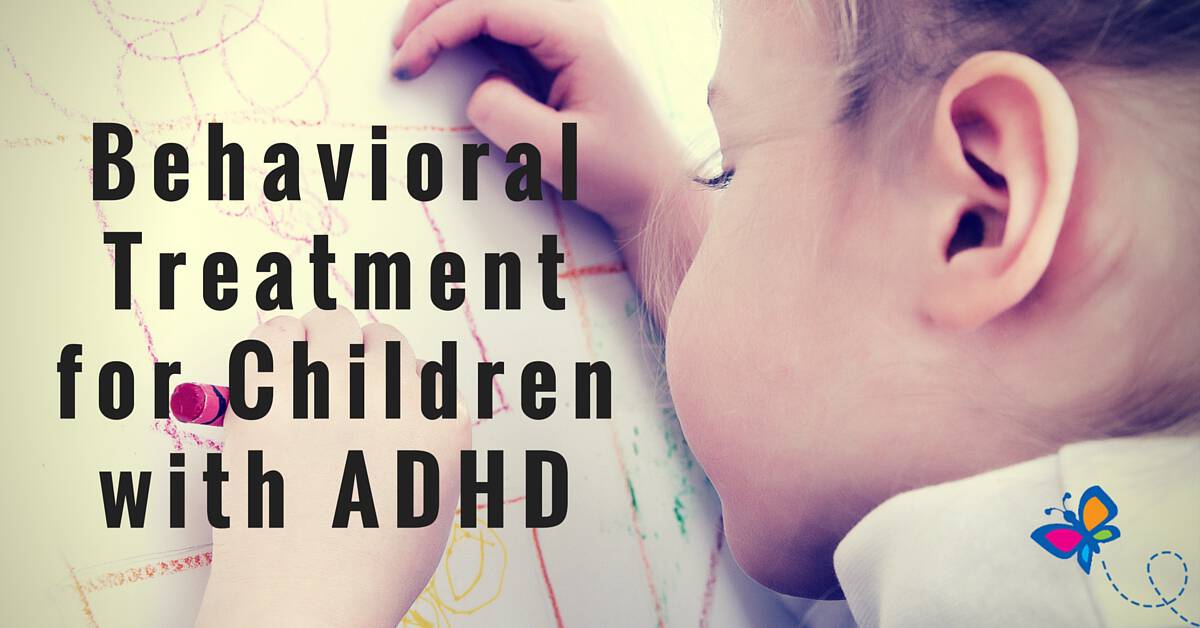Understanding ADHD and Medication Treatment

ADHD affects executive function in the brain, which both Ritalin and Adderall target through different mechanisms.
ADHD is characterized by a persistent pattern of inattention, hyperactivity, and impulsivity that interferes with functioning and development. According to the CDC, approximately 6 million children (11%) in the United States have been diagnosed with ADHD, and more than 4% of U.S. adults live with the condition.
For people with ADHD, the brain’s executive function—which controls attention, behavior, and emotional regulation—doesn’t work as effectively. This dysfunction makes it difficult to stay on task, manage behavior, control overactivity, and regulate mood.
Medication is typically the first-line treatment for managing ADHD symptoms in patients over age 6. While these medications don’t cure ADHD, they can significantly reduce symptoms and improve quality of life when properly prescribed.
Active Ingredients and Mechanism of Action
Ritalin (Methylphenidate)

Ritalin contains methylphenidate, which has been used to treat ADHD since the 1950s. It works primarily by blocking the reuptake of dopamine and norepinephrine—neurotransmitters responsible for attention and impulse control.
By preventing these neurotransmitters from being reabsorbed too quickly, methylphenidate allows messages to continue moving forward through the brain’s neural pathways. This helps improve concentration, reduce impulsive actions, and manage other ADHD symptoms.
Other brand names in this class include Concerta, Daytrana, Focalin, Metadate, and Quillivant.
Adderall (Amphetamine/Dextroamphetamine)

Adderall contains a combination of amphetamine and dextroamphetamine salts. These compounds have been used to treat ADHD since around 1960 and work through multiple mechanisms:
- Preventing reuptake of dopamine and norepinephrine (similar to Ritalin)
- Inhibiting autoreceptors, allowing more neurotransmitters to be released
- Increasing the availability of neurotransmitters
- Enhancing postsynaptic receptors to improve message reception
Other brand names in this class include Dexedrine, Vyvanse, Mydayis, and Evekeo.
“The true usefulness of medicine is whether it works for an individual. As physicians, we’re looking for what makes a difference in the life of the patient sitting in front of us.”
— Dr. Michael Manos, Pediatric Behavioral Health Specialist
FDA-Approved Uses

| Medication | ADHD | Narcolepsy | Age Approval | Other Uses |
| Ritalin (Methylphenidate) | Yes | Yes | 6 years and older | Off-label for depression, fatigue in cancer patients |
| Adderall (Amphetamine/Dextroamphetamine) | Yes | Yes | 3 years and older | Off-label for treatment-resistant depression, obesity (short-term) |
Both medications are FDA-approved for treating ADHD and narcolepsy, though they may be prescribed off-label for other conditions. According to clinical guidelines from the American Academy of Pediatrics, stimulant medications are recommended as first-line pharmacological treatment for ADHD in children aged 6 and older.
Effectiveness in Clinical Studies

Research has not definitively shown whether Ritalin or Adderall is more effective overall. According to a study published in the journal Pediatrics, both medications produce significant improvements in ADHD symptoms, though individual responses vary considerably.
In one direct comparison study, researchers found that “low doses of Adderall were functionally more potent than low doses of Ritalin,” suggesting that Adderall might be more effective at lower doses. However, at appropriate therapeutic doses, both medications showed similar efficacy in reducing ADHD symptoms.
ADDitude Magazine reports that approximately 85% of patients will achieve symptom control using either amphetamine (Adderall) or methylphenidate (Ritalin) formulations. If one medication doesn’t work well, trying the alternative often leads to success.
Research Finding: A study in The Lancet Psychiatry suggested that Adderall might be more effective for adults, while Ritalin could be a better first-choice medication for children and adolescents. However, individual responses vary significantly.
Duration of Effects
Short-Acting Formulations
Ritalin (Immediate Release)
- Onset: 20-30 minutes
- Peak effect: 1-2 hours
- Duration: 2-3 hours
- Typically dosed 2-3 times daily
Adderall (Immediate Release)
- Onset: 30-60 minutes
- Peak effect: 1-3 hours
- Duration: 4-6 hours
- Typically dosed 1-2 times daily
Long-Acting Formulations
Ritalin LA/Concerta (Extended Release)
- Onset: 20-30 minutes
- Duration: 8-12 hours (depending on formulation)
- Single daily dosing
- Concerta uses osmotic release technology
Adderall XR (Extended Release)
- Onset: 30-60 minutes
- Duration: 10-12 hours
- Single daily dosing
- Uses beaded technology for two-phase release
One key difference between Ritalin and Adderall is their duration of action. Immediate-release Ritalin works sooner and reaches peak performance faster than Adderall but stays in the body for a shorter time. This means patients taking Ritalin may need more doses throughout the day.
Some individuals prefer Ritalin’s shorter duration because it allows better control over the timing of side effects like difficulty sleeping or loss of appetite. Extended-release formulations of both medications have largely addressed the need for multiple daily doses.
Common Side Effects and Safety Profiles

Both Ritalin and Adderall share similar side effect profiles, particularly when first starting the medication. The most common side effects include:
Common Side Effects
- Decreased appetite
- Sleep difficulties
- Headache
- Stomach upset
- Increased heart rate
- Elevated blood pressure
- Nervousness/anxiety
- Dry mouth
- Weight loss
Serious Side Effects (Rare)
- Cardiovascular issues
- Growth suppression in children
- Psychiatric effects (mood changes, psychosis)
- Seizures
- Priapism (prolonged erection)
- Vision problems
- Serotonin syndrome (with certain medications)
Due to the amphetamine component in Adderall, it may carry a slightly higher risk of cardiovascular side effects compared to Ritalin, though both medications require monitoring of heart rate and blood pressure.
Important Safety Information: Both Ritalin and Adderall are classified as Schedule II controlled substances due to their potential for misuse. They should only be taken as prescribed by a healthcare provider and never shared with others.
Dosage Guidelines and Prescribing Patterns

Dosing for both medications is highly individualized and depends on the patient’s age, weight, symptom severity, and response to treatment. Healthcare providers typically start with a low dose and gradually increase until optimal symptom control is achieved with minimal side effects.
| Medication | Age Group | Initial Dose | Typical Dose Range | Maximum Daily Dose |
| Ritalin (IR) | Children (6+ years) | 5 mg twice daily | 10-60 mg/day | 60 mg |
| Ritalin (IR) | Adults | 10-20 mg twice daily | 20-60 mg/day | 60 mg |
| Adderall (IR) | Children (3-5 years) | 2.5 mg daily | 2.5-40 mg/day | 40 mg |
| Adderall (IR) | Children (6+ years) | 5 mg once or twice daily | 5-40 mg/day | 40 mg |
| Adderall (IR) | Adults | 5-10 mg daily | 5-40 mg/day | 40 mg |
Research suggests that Adderall may be functionally more potent than Ritalin at comparable doses. A study published in Pediatrics found that lower doses of Adderall produced effects comparable to higher doses of Ritalin, which may influence prescribing patterns.
Extended-release formulations of both medications are often preferred because they reduce the need for multiple daily doses and provide more consistent symptom control throughout the day.
Age-Specific Considerations
Children and Adolescents
According to research published in The Lancet Psychiatry, Ritalin (methylphenidate) may be a better first-choice medication for children and adolescents with ADHD. Pediatricians often start with Ritalin due to its established safety profile in younger populations and slightly lower potency compared to Adderall.
Growth monitoring is important for children taking either medication, as both can potentially affect height and weight gain. Regular “drug holidays” (planned breaks from medication) may be recommended during school vacations to assess continued need and minimize growth effects.
Adults
Adderall may be more effective for adults with ADHD, according to some clinical research. Adults typically experience fewer side effects than children and may benefit from the longer duration of action that Adderall provides.
For adults with co-existing conditions like depression or anxiety, the choice between medications may be influenced by how they interact with other treatments.
Clinical Insight: Approximately 25% of study participants in ADHD medication trials are considered “non-responders” to either medication, often showing minimal incremental benefit from medication when receiving concurrent behavioral interventions.
Cost and Insurance Coverage

The cost of both medications varies depending on formulation (immediate-release vs. extended-release), dosage, and whether generic versions are available. Generally:
- Generic versions of both medications are significantly less expensive than brand-name versions
- Extended-release formulations typically cost more than immediate-release versions
- Most insurance plans cover both medications, though they may prefer one over the other
- Prior authorization may be required, especially for brand-name or extended-release formulations
- Due to their controlled substance status, prescriptions may be limited to 30-day supplies with no refills
Patient assistance programs are available from manufacturers for those who qualify based on financial need. Additionally, pharmacy discount cards and coupons can help reduce out-of-pocket costs for those without adequate insurance coverage.
Risk of Misuse and Dependency

Both Ritalin and Adderall are classified as Schedule II controlled substances by the DEA due to their potential for misuse and dependency. When used as prescribed for ADHD, neither medication has been proven to be addictive. However, both can be misused, particularly in settings like college campuses where they may be used as study aids.
The risk of psychological dependency exists with both medications. Users may become accustomed to the improved focus and productivity they experience while taking the medication and feel they cannot function optimally without it.
Serious consequences of misuse can include:
- Psychosis
- Cardiovascular problems (heart attack, cardiomyopathy)
- Severe anxiety and paranoia
- Sleep disturbances
- In extreme cases, sudden death
Important: Never take higher doses than prescribed, use someone else’s prescription, or take these medications through unapproved routes (crushing, snorting, injecting). These actions significantly increase the risk of serious adverse effects and dependency.
Frequently Asked Questions

Which works faster, Ritalin or Adderall?
Ritalin typically begins working faster than Adderall. Immediate-release Ritalin usually takes effect within 20-30 minutes, while Adderall may take 30-60 minutes to start working. However, Adderall generally lasts longer in the body (4-6 hours compared to Ritalin’s 2-3 hours for immediate-release formulations).
Can you switch between Ritalin and Adderall?
Yes, many patients who don’t respond well to one medication may switch to the other under medical supervision. According to clinical guidelines, if one stimulant class doesn’t provide adequate symptom control or causes intolerable side effects, trying the other class is recommended. Your healthcare provider will determine appropriate dosing when switching medications.
Which medication is stronger, Ritalin or Adderall?
Neither medication is inherently “stronger” than the other, but research suggests that Adderall may be functionally more potent at comparable doses. This means lower doses of Adderall may produce effects similar to higher doses of Ritalin. However, individual responses vary significantly, and effectiveness depends on many factors including genetics, metabolism, and the specific ADHD symptoms being treated.
Are there non-stimulant alternatives to Ritalin and Adderall?
Yes, FDA-approved non-stimulant medications for ADHD include atomoxetine (Strattera), guanfacine (Intuniv), and clonidine (Kapvay). These medications work differently than stimulants and may be appropriate for patients who cannot tolerate stimulants or have certain medical conditions that make stimulant use inadvisable. They typically have a more gradual onset of action and may take several weeks to reach full effectiveness.
Conclusion: Making an Informed Decision

Both Ritalin and Adderall are effective medications for managing ADHD symptoms, with decades of research supporting their use. The choice between them should be individualized based on a patient’s specific symptoms, age, medical history, and response to treatment.
Key takeaways from this comparison include:
- Ritalin (methylphenidate) works primarily by blocking dopamine and norepinephrine reuptake
- Adderall (amphetamine/dextroamphetamine) works through multiple mechanisms and may be functionally more potent at comparable doses
- Ritalin has a faster onset but shorter duration compared to Adderall
- Both medications have similar side effect profiles, though individual responses vary
- Extended-release formulations of both medications provide longer symptom control with once-daily dosing
- Research suggests Ritalin may be preferable for children, while Adderall may work better for adults
Speak With a Healthcare Provider
If you or your child has been diagnosed with ADHD, work closely with a healthcare provider to find the most appropriate medication and dosage. Remember that medication is often most effective when combined with behavioral therapy and other support strategies.






